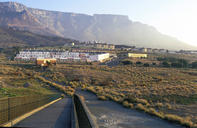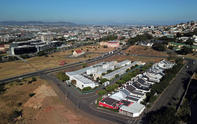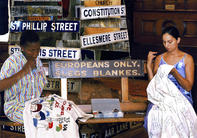Forced Removals
One of the most ignominious chapters in Cape Town’s history is the legacy of forced removals that ripped the city apart in the 1950’s and 1960’s.

This was an era of oppression and that swept over the whole of South Africa, as guided by H.F. Verwoerd and the Nationalist party. And it was all done on the flimsy excuse that it would be best for the native populations to be allowed to develop separately, for their own good. Accordingly, the official policy of the time was to remove all blacks and other ‘undesirables’ from the white cities to pre-ordained townships where, like the Bushmen in the desert, they would be left to survive as best they could on land that no-one wanted.
District Six and Sophiatown

Two of the best-known forced removals in South African history were from Sophiatown, in Joburg and District Six in Cape Town. As case studies, they have a lot in common: both areas were home to thriving mixed-race communities, situated close to their respective city centres.
Both were chaotic, overcrowded suburbs riddled with criminals. And both were home to proud and independent people who cherished their freedom, their music and their unique lifestyle. As such, these areas were a hindrance to the National Party, who wanted a white dominion untainted by people of colour. Sophiatown and District Six were subsequently bulldozed into oblivion.
From the ashes of Sophiatown, a new white suburb arose. It was called Triomf 'Triumph', perhaps the most distasteful and contemptuous place name ever awarded to a suburb. But at least in Joburg they built a new suburb on the rubble of the old. The streets of District Six, by comparison, were never re-developed and they still stand empty, a weird urban wasteland just a few k’s outside the heart of the Mother City.
As a final irony, both suburbs have been turned into successful protest musicals, which toured the world’s stages and helped galvanise international attitudes against the Apartheid regime.
The Spirit of District Six

While District Six no longer exists, the sights and sounds of ‘Fairyland’ live on in the District Six Museum. It’s a touching and important installation that documents the suburb’s unique character, history and ultimate destruction at the hands of Apartheid’s architects. The people may have been moved to the Cape Flats and other desolate locations, but the spirit of District Six, and Sophiatown, lives on.
Thankfully, under the new political dispensation, the original inhabitants of District 6 have been given back their land and are now wrestling with the difficult task of rebuilding a community. Led by the District Six Beneficiary and Redevelopment Trust, it’s been a controversial process, riddled with legal conflicts and divergent perspectives. Ultimately, one hopes that the soul of the ‘Distrik’ will be successfully reclaimed.
By David Fleminger